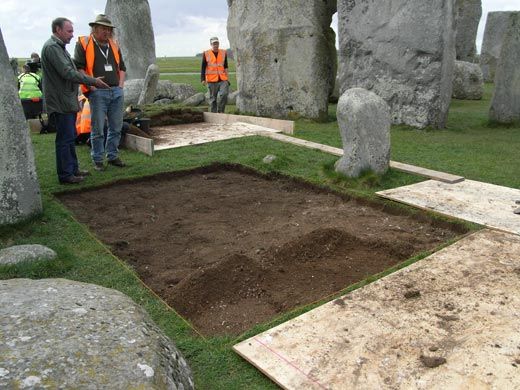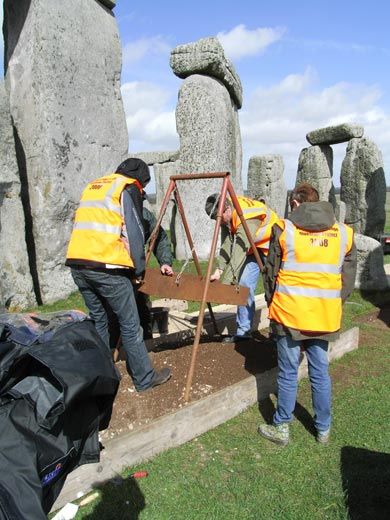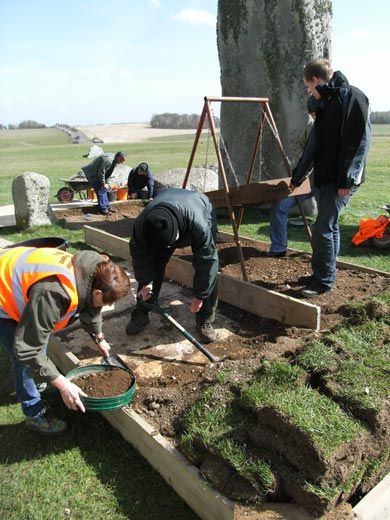Dispatch from Stonehenge, Day 2
April 1st: An Ill Wind Blows
/https://tf-cmsv2-smithsonianmag-media.s3.amazonaws.com/filer/stonehenge_danjones_631.jpg)
After yesterday's frenetic media circus, archaeologists Tim Darvill and Geoff Wainwright were pleased to finally get their hands dirty today and begin the real work of excavating their marked-out plot within Stonehenge's inner circle. Conditions could be better for this sort of work: While rain is thankfully absent and bright sunshine beams down from a nearly cloudless sky, a strong wind whips across the Salisbury Plains, creating a miniature dust bowl as the researchers work in the trench. Worse still, the soil excavated from the trench is being sifted upwind of the site, so with every shake of the sieve a cloud of soil blows onto the workers hunched in the pit.
So far, about 6 inches of topsoil have been removed. The new trench partially overlaps at one end with previous excavations carried out in the 1920s and 1960s—so, some of the work has been removing the soil used to fill back in these earlier explorations.
The soil from the rest of the trench has so far yielded some animal bones (possibly from rabbits), a few snail shells and a number of clay smoking pipes that Darvill says could date back to the seventeenth century. Also found were some fragments of crockery, which Darvill suspects were left behind by Victorian picnickers. More importantly, however, fragments and flakes of bluestone, as well as sarsen and flint (perhaps used as blades to work with animal skins), have been retrieved from the ground. The significance of the stones, and the secrets stored in them, will become clearer over the coming weeks and months as the archaeological team analyzes their findings.
Meanwhile, discussion of the archaeological dig has found its way on to the blogosphere, where theories about Stonehenge's origins—and the excavation—abound. (A rumor is already spreading that the excavation is part of a plan by English Heritage to physically relocate the monument.) One blog of particular note is "Girl with Trowel," where PhD student Kayt Armstrong describes her experience last week helping to prepare for the excavation by conducting a Ground Penetrating Radar survey to locate the previous trench. ("It's been so hard knowing what I was up to, and how amazing it is, and not being able to blog about it 'till today!") While at Stonehenge, she had to wear a bright yellow vest to signify her official status—lest authorities mistake her for a trespassing tourist or a rogue druid.
Dan Jones is a freelance science writer who has contributed articles to New Scientist.


